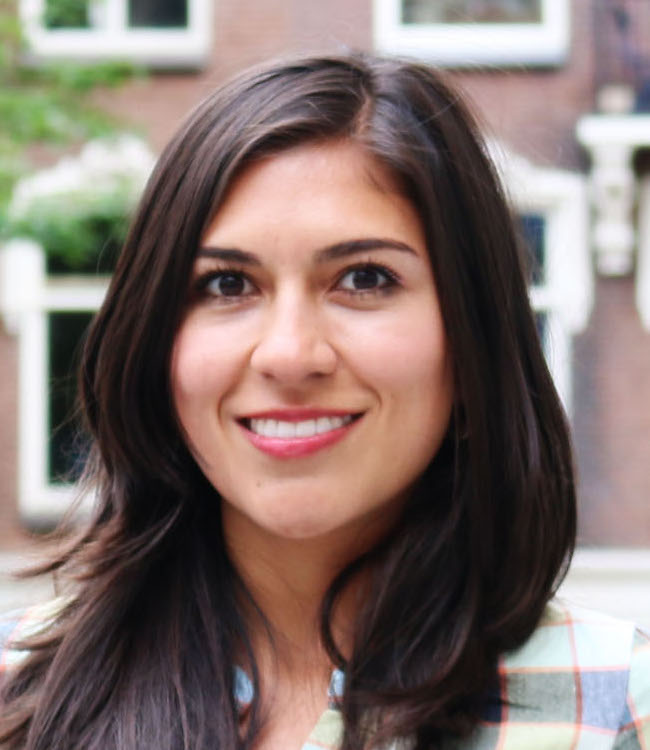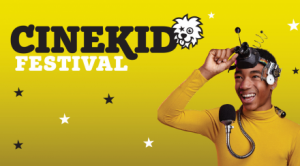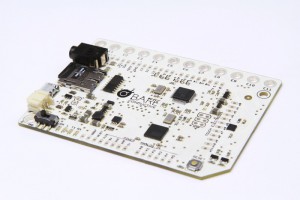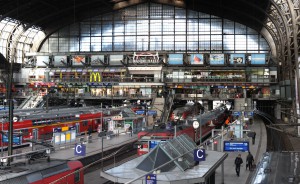The Cinekid Festival is a yearly festival in Amsterdam that officially focuses on children’s cinema. Yet its real scope is much broader. They host all kinds of events and workshops intending to boost the media literacy of both children and adults. On 22 October 2015, we attended Cinekid’s Responsive Memories workshop. In the workshop, part of Cinekid’s Medialab Academy (not related to ‘our’ MediaLab), we used the Touchboard technology to link personal memories to physical space. The Touchboard is, to quote Cinekid, ‘a piece of hardware that can change the world around you by turning almost any material or surface into a sensor”. Attaching a conductive material to any of the Touchboard’s 12 electrodes can create a touch sensor. Furthermore the Touchboard is equipped with an MP3-player, enabling it to play 12 different songs or sounds. Lastly it can work as MIDI synthesizer and send MIDI messages to other devices. These possibilities allow Touchboard users to create interactive and responsive interfaces.
Once you understand how the Touchboard works, it is quite easy to create an interactive experience with it. The Touchboard must first be connected to a device with a USB-port. In order to play sounds, the Touchboard must also be connected to an audio player. Furthermore the audio files have to be downloaded on a memory card, and the memory card inserted in the Touchboard. The next step is to attach the drawings and photographs to any kind of conductive material, such as aluminum foil, clay, or even the human body. At Cinekid’s workshop many also made use of special electric paint. Once the images have become a conductor they can be connected to the sound. This can be done with jump wires. One end of the wire should be attached to the conductor; the other end should be inserted in one of the Touchboard’s electrodes. If you have done everything correctly, you should now be able to hear a sound anytime you touch the conductor. Unfortunately you cannot control which audio file is in which of the 12 electrodes. This means that you might have to rearrange the jump wire a couple of times before you find the desired combination of sound and image.
Before coming to the workshop, the participants were all asked to think of a memory, and the sounds and images that trigger it. In the workshop we would use these sounds and images to create a physical representation of our memory. The diversity of the participants allowed for many divergent memories. While some participants did not look very far back into their lives, others really embraced a childhood remembrance. Various images, both photographic and drawn, of a lake, family life in Colombia, the Duomo in Florence, and the Hamburg train station were combined with many different sounds such as a Beatles song, a Philip Glass composition, church bells, and rustling water. Eventually everybody managed to create a physical representation of their memory. The most evocative was a construction that represented a summer day at the brook. This construction showed that it is not necessary to just stick to 2D-imagery. With clay and other materials it is also possible to create 3D-figures.
The workshop not only allowed us to explore a new technology, but it also forced us to work creatively and originally. This is quite an unusual way of interacting with sounds and images, and at first sight it may seem like an oblique approach to achieve something that can be done more easily using a laptop and YouTube. The Touchboard technology forces you to think differently though, and in the process gets you out of your comfort zone. Besides it adds a tactile element that is especially relevant in the context of recreating memories. Lastly with the Touchboard you can recreate an experience in a different space and time from where it occurred. Naturally this is far from an exact replica, but it does allow you to recontextualize the experience in a potentially interesting way.
It is not hard to see how the Touchboard can be relevant for our project. The Yugoslav Wars and the dire economic situation have forced many people from the Balkans to leave their home country. They often have many memories they cannot always discuss. A workshop with the Touchboard could allow them to access some of their (war) memories and discuss them in a safe environment. Reliving their memory in a different context, free from historical and cultural baggage, could help them reflect on how their values and ideas are very much shaped by the place and time they live in. Furthermore we have now developed a reflective game, to which we hope to add some educational component. The Touchboard technology is an interesting option that expands our possibilities.
It is easily imaginable that the Touchboard can be applied in many other projects. For example, there is currently a lot of discussion about whether children spent too much time online. The Touchboard can be used to make visible that what children do online is quite relevant. On the other hand, it can also allow the children to use a ‘computer’, while at the same time interacting with real people in a physical space.









